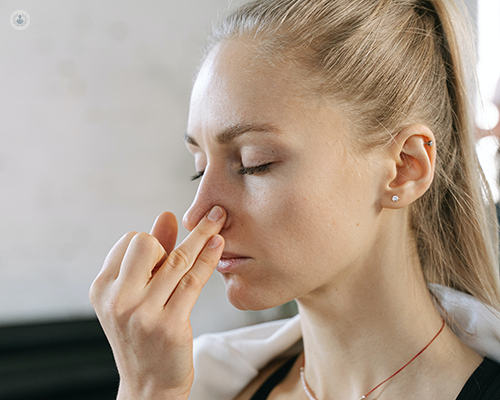Rhinomanometry
What is rhinomanometry?
Rhinomanometry is a technique used to objectively measure nasal pressure and airflow through the nostrils during breathing. It is accepted as a standard technique for measuring nasal airway resistance to detect possible obstructions in the airways.
In order to carry out this test, a rhinomanometer is used, which is a type of manometer that measures airflow and resistance. This is connected to a computer in order to record the results and lasts just a few minutes.
Why is rhinomanometry performed?
With a rhinomanometry, it's possible to identify any resistance to the air when it passes through the nostrils, both at the time of inspiration and during expiration. Increased pressure during respiration is usually a result of increased resistance to airflow through the nasal passageways. However, an increase in the speed of airstream is often related to improved patency.
Therefore, with this test, you can detect if there’s any inflammation present in the nasal cavity, nasal polyps, hypertrophy in the turbinates, a deviated septum, etc.

Preparation for rhinomanometry
To prepare for a rhinomanometry, there are no specific steps or instructions to follow. You should simply go to your appointment with a clean nose to perform the test effectively. Smoking is also not recommended for at least 48 hours before the test.
What do you feel during rhinomanometry?
During the test, you shouldn’t feel anything unusual, since it's a non-invasive and totally painless test. It should also be noted that the test does not put the patient's health at risk at any time.
Meaning of abnormal results
Rhinomanometry will detect the existence of any problems, deformities or obstructions in the nose, or if there is an inflammation in the mucous membrane.
Depending on what is detected, a specialist will have to assess which treatment is appropriate and whether it is necessary to perform surgery or change to the structure of the nose.